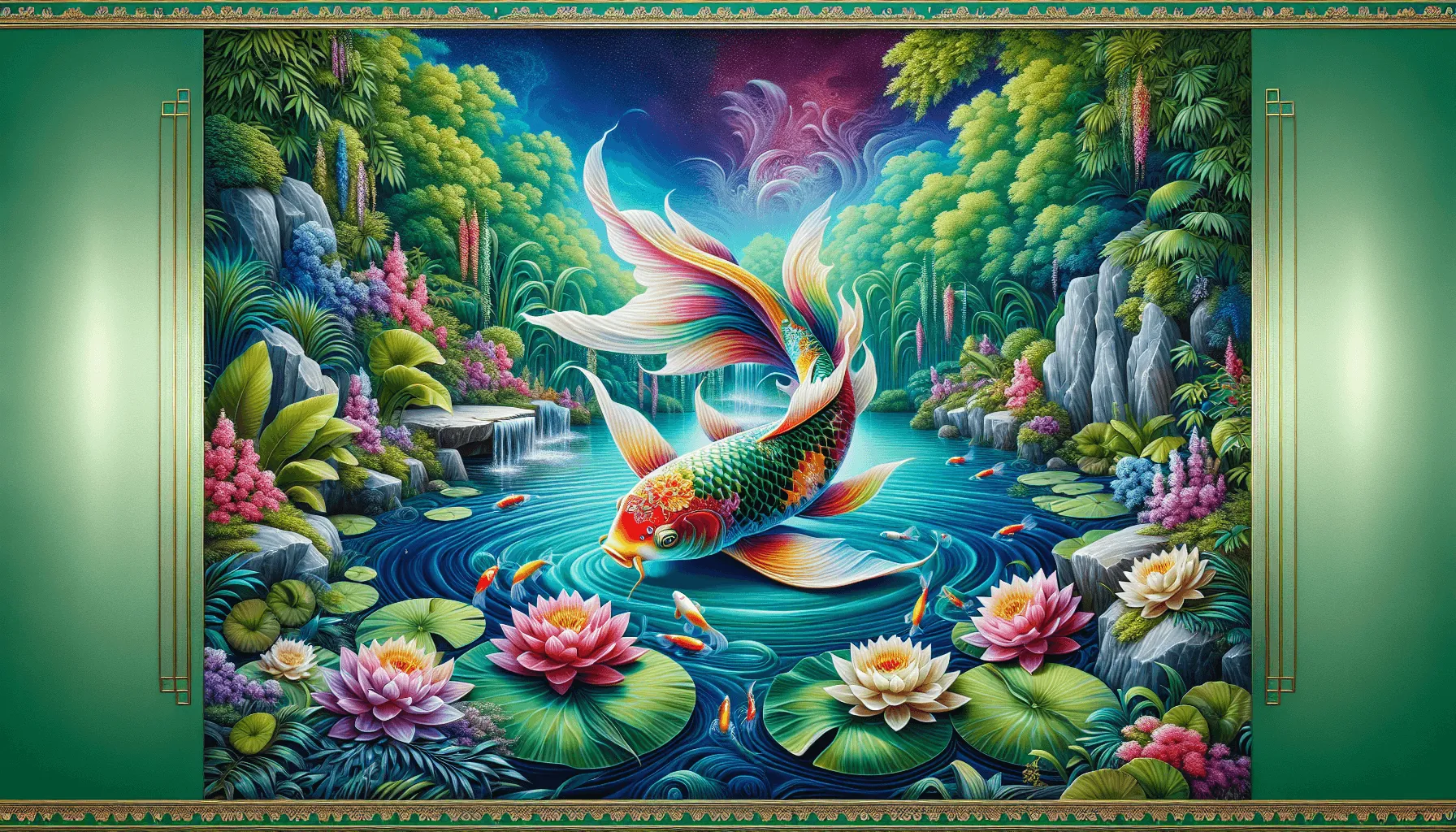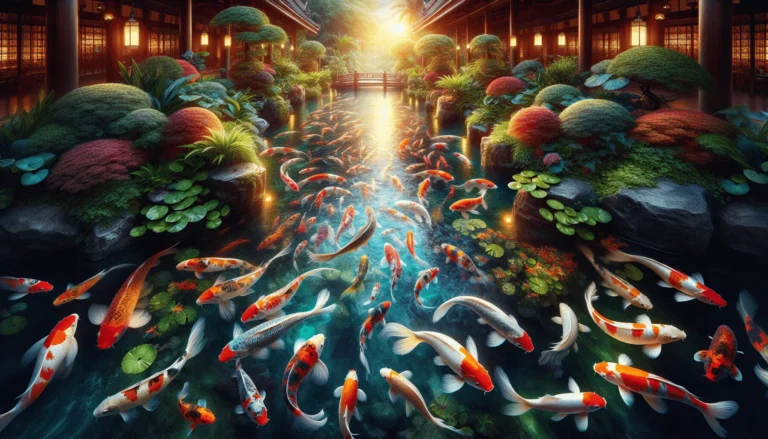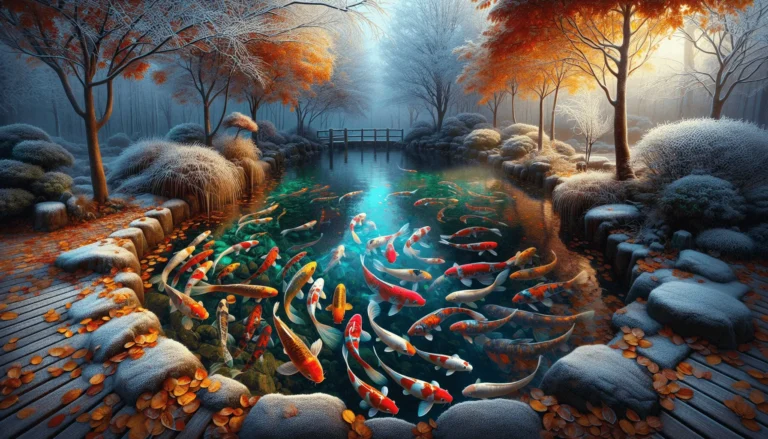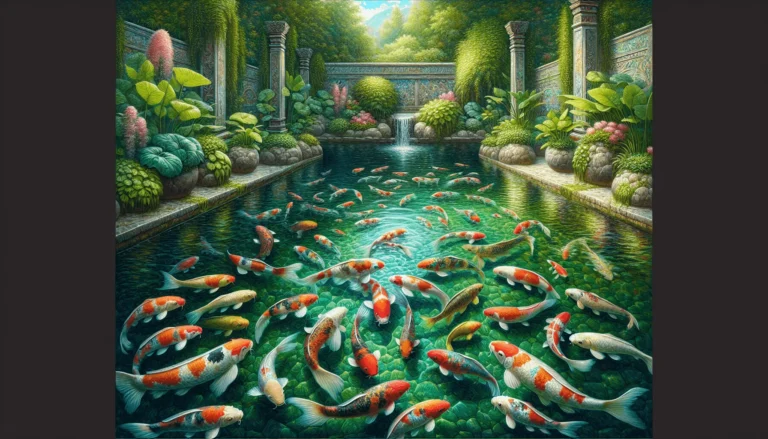Koi fish have captured the hearts of many as one of the most beloved pets in aquatic hobbies. Known for their vibrant colors and graceful movements, they add a touch of serenity and beauty to any pond or water garden. Originating from Japan, these ornamental carp have gained popularity worldwide due to their aesthetic appeal and symbolic significance.
The longevity of koi fish is quite remarkable. With proper care and optimal conditions, koi fish can live for several decades. Koi enthusiasts often marvel at the impressive lifespan these fish can achieve, sometimes extending well beyond the average range of other pet fish.
Key takeaway: Koi fish can live for several decades if provided with proper care and optimal conditions. Understanding the factors that influence their lifespan is essential for anyone looking to keep these stunning creatures healthy and thriving in their aquatic environments.
The Average Lifespan of Koi Fish
Koi fish have an impressive lifespan, typically ranging between 25 to 30 years in well-maintained environments. Several factors can influence how long koi fish live, including genetics, diet, and pond conditions. Understanding these elements is crucial for any koi owner aiming to maximize the longevity of their pets.
Domestic vs. Japanese Koi
Domestic Koi
Typically, domestic koi have a shorter lifespan compared to their Japanese counterparts. On average, you can expect domestic koi to live around 15 years due to different breeding practices that often prioritize faster growth over long-term health.
Japanese Koi
Known for their enhanced longevity, Japanese koi generally live up to 40 years. This extended lifespan can be attributed to superior breeding practices and more stringent care standards in Japan.
Some koi fish have been known to live even longer under ideal conditions. For example, the oldest documented koi, named Hanako, reportedly lived for an astonishing 226 years.
Influencing Factors
Several key factors contribute to the average lifespan of koi fish:
- Pond Size and Quality: Larger ponds generally provide better water quality and more stable environments.
- Water Conditions: Consistent pH levels and temperature are essential.
- Genetics: Breeding practices significantly impact overall health and longevity.
By focusing on these aspects, you can significantly extend the life expectancy of your koi fish.
Factors That Affect the Lifespan of Koi Fish
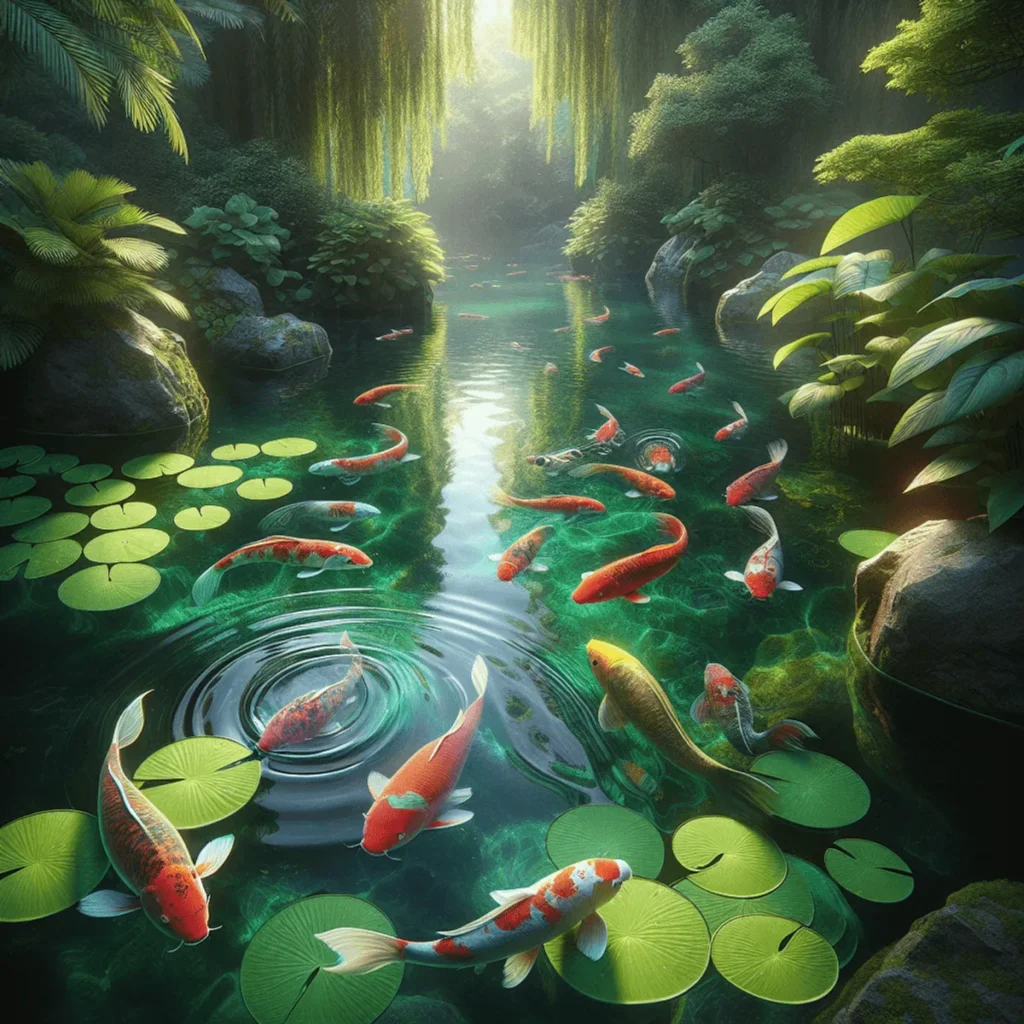
1. Pond Conditions
The environment in which koi fish live plays a critical role in determining their lifespan. A well-constructed pond provides not only aesthetic beauty but also creates a habitat conducive to the long-term health and vitality of your koi. Several elements contribute to creating an ideal pond environment:
Stable Water Conditions
Maintaining stable pH levels and temperature is paramount for the well-being of koi fish. Fluctuations can cause stress, leading to various health issues and potentially shortening their lifespan.
- pH Levels: Koi thrive in water with a pH level between 7.0 and 8.0. Regular testing ensures that the water remains within this optimal range.
- Temperature: Ideally, the water temperature should be kept between 59°F and 77°F (15°C to 25°C). Extreme temperatures can be detrimental to koi health.
Water Quality
High-quality water is essential for promoting longevity in koi fish. This involves monitoring and managing several parameters:
- Oxygen Levels: Adequate oxygenation is crucial. Aeration systems like waterfalls or air pumps can help maintain optimal oxygen levels.
- Nitrates/Nitrites: Regular testing is necessary to balance nitrates and nitrites, as high levels can be toxic.
Pond Size
Larger ponds generally support longer lifespans due to better water quality and more stable environments. A spacious pond reduces stress by providing ample room for koi to swim freely, which promotes better physical condition.
Filtration System
A robust filtration system effectively removes waste products, uneaten food, and other debris, keeping the water clean and clear. Mechanical filters trap solid particles, while biological filters convert harmful ammonia into less harmful nitrates through beneficial bacteria.
Debris Control
Regularly removing debris such as leaves, algae, and other organic matter prevents the accumulation of toxins that can affect water quality.
Creating a healthy pond environment requires consistent maintenance and attention to detail. By focusing on these key aspects, you set the stage for your koi fish to thrive and potentially live for decades.
2. Genetics and Breeding Practices
Breeding practices play a crucial role in determining how long koi fish live. Japanese koi, known for their long lifespans, often benefit from selective breeding techniques aimed at improving their health, color, and endurance. These practices are deeply rooted in tradition and involve careful selection of parent fish to ensure desirable traits are passed on.
Key Differences Between Japanese and Domestic Breeding:
- Selective Breeding: Japanese breeders focus on selective breeding to develop koi with superior genetics. This practice ensures that only the healthiest and most vibrant fish reproduce, promoting longer lifespans.
- Focus on Quality Over Quantity: In Japan, the emphasis is on producing high-quality koi rather than large quantities. This allows breeders to invest more time and resources in each fish’s well-being.
In contrast, domestic breeding practices outside Japan often prioritize faster growth rates and higher production volumes. This approach can lead to compromised genetic quality, resulting in koi with shorter lifespans—typically around 15 years compared to the 40 years seen in their Japanese counterparts.
Impact on Health and Lifespan:
- Genetic Strength: Koi bred with a focus on genetic strength are less likely to get diseases and handle environmental stresses better, contributing to their longer lifespans.
- Factors Affecting Longevity: The length of time koi fish live is directly influenced by these breeding practices. With proper care, some koi have been known to live up to 100-200 years under ideal conditions.
Understanding these differences helps you appreciate the importance of genetics in koi breeding. Investing in high-quality koi from reputable breeders can significantly impact how old your koi fish get, ensuring they thrive for decades.
3. Diet and Feeding Practices for Longevity
A balanced diet is crucial for the longevity of koi fish. Providing a nutritious diet helps in maintaining their vibrant colors, robust health, and overall well-being.
Key Dietary Components:
- Proteins: Essential for growth and muscle development. High-quality koi food typically contains fish meal or shrimp meal as primary protein sources.
- Carbohydrates: Provide energy but should be included in moderation to prevent obesity.
- Fats: Necessary for energy and maintaining healthy skin and scales.
- Vitamins and Minerals: Support immune function, bone health, and various metabolic processes.
Common Feeding Practices Among Experienced Keepers:
- Seasonal Feeding: Adjust the diet according to seasonal changes. During warmer months, feed high-protein foods to support growth. In colder months, opt for low-protein, wheat germ-based diets to ease digestion.
- Portion Control: Overfeeding can lead to poor water quality and health issues. Feed only what koi can consume in five minutes.
- Variety: Incorporate different types of food such as pellets, vegetables (like peas and lettuce), and occasional treats like shrimp or worms to provide a well-rounded diet.
Maintaining a proper feeding schedule not only enhances the fish’s health but also contributes to factors affecting koi fish lifespan by ensuring they receive all necessary nutrients.
4. Stress Factors That Can Shorten Their Lifespan
Stress significantly impacts the longevity of koi fish. One major stressor is spawning, particularly for female koi. The process of producing and laying eggs puts considerable strain on their bodies, potentially reducing their lifespan. In contrast, male koi generally experience less physiological stress and often live longer.
Key stress factors include:
- Spawning: Female koi endure physical demands during egg production and laying, which can lead to a shorter lifespan.
- Environmental Stress: Poor pond construction or unstable water conditions (pH levels, temperature) contribute to stress. Managing fish health in such environments is crucial.
- Overcrowding: High fish density in ponds can lead to competition for resources and increased aggression, adding to stress levels.
- Handling and Transportation: Frequent handling or moving can cause significant stress, impacting their overall health.
To minimize these stressors, maintaining a healthy pond environment with stable conditions is essential. Understanding these factors helps in creating an optimal habitat for your koi fish, ensuring they live long and healthy lives.
For further insights on the effects of stress on fish health and potential measures for improvement, refer to this comprehensive study. Additionally, exploring this research paper could provide valuable information on the subject. In extreme cases where the health of the fish cannot be salvaged despite best efforts, it’s important to understand the ethical considerations involved in euthanasia, which are outlined in the AVMA guidelines.
Understanding Koi Reproduction and Its Relation to Age
Koi Spawning Behavior: A Closer Look at Mating Process in Koi Fish
Koi fish become sexually mature between 2 and 5 years old. During breeding season, usually in late spring when water temperatures exceed 68°F (20°C), koi display specific mating behaviors.
Courtship Behavior
- Males start to chase females aggressively around the pond.
- They nudge the female’s abdomen to stimulate the release of eggs.
- This behavior can sometimes be mistaken for aggression, but it’s a natural part of the spawning process.
Spawning Process
- Selection of Spawning Site: Female koi look for suitable surfaces such as plants or spawning mops where they can lay their eggs.
- Egg Release and Fertilization: As the female releases her eggs, multiple males swim alongside her, releasing milt (sperm) to fertilize them.
- Egg Adhesion: The fertilized eggs are sticky and adhere to the chosen surface until they hatch.
This process is physically taxing, especially for females who bear the burden of egg production and release. The stress from spawning can impact their health and longevity, making it crucial to provide optimal conditions during this period.
Egg Laying and Development: Nurturing Baby Koi After Hatching
During each spawning event, a female koi can lay between 100,000 to 200,000 eggs. These eggs are usually sticky and attach to various surfaces within the pond, such as plants or specially designed spawning brushes. The appearance of the eggs can vary but they are typically small and see-through.
Sexual Maturity in Koi Reproduction
Koi fish generally reach sexual maturity around the age of 3 to 4 years. Indicators that signal readiness for spawning include increased activity levels and changes in behavior such as chasing by males and a noticeable bloating in females due to egg production.
Care Requirements for Koi Eggs and Fry
After hatching, baby koi, also known as fry, require specific care to ensure their survival:
- Water Quality: Maintaining optimal water conditions is crucial. This includes stable pH levels and temperatures.
- Feeding: Initially, fry feed on their yolk sacs. Once these are absorbed, providing finely ground food or specialized fry feed is essential.
- Protection: Separating fry from adult koi helps prevent predation and provides a safe environment for growth.
Understanding how many eggs a koi fish lays and the necessary care requirements after hatching are pivotal aspects of nurturing the next generation of koi fish. Proper management ensures healthy development during these critical early stages.
Optimal Conditions for Promoting Koi Health and Longevity
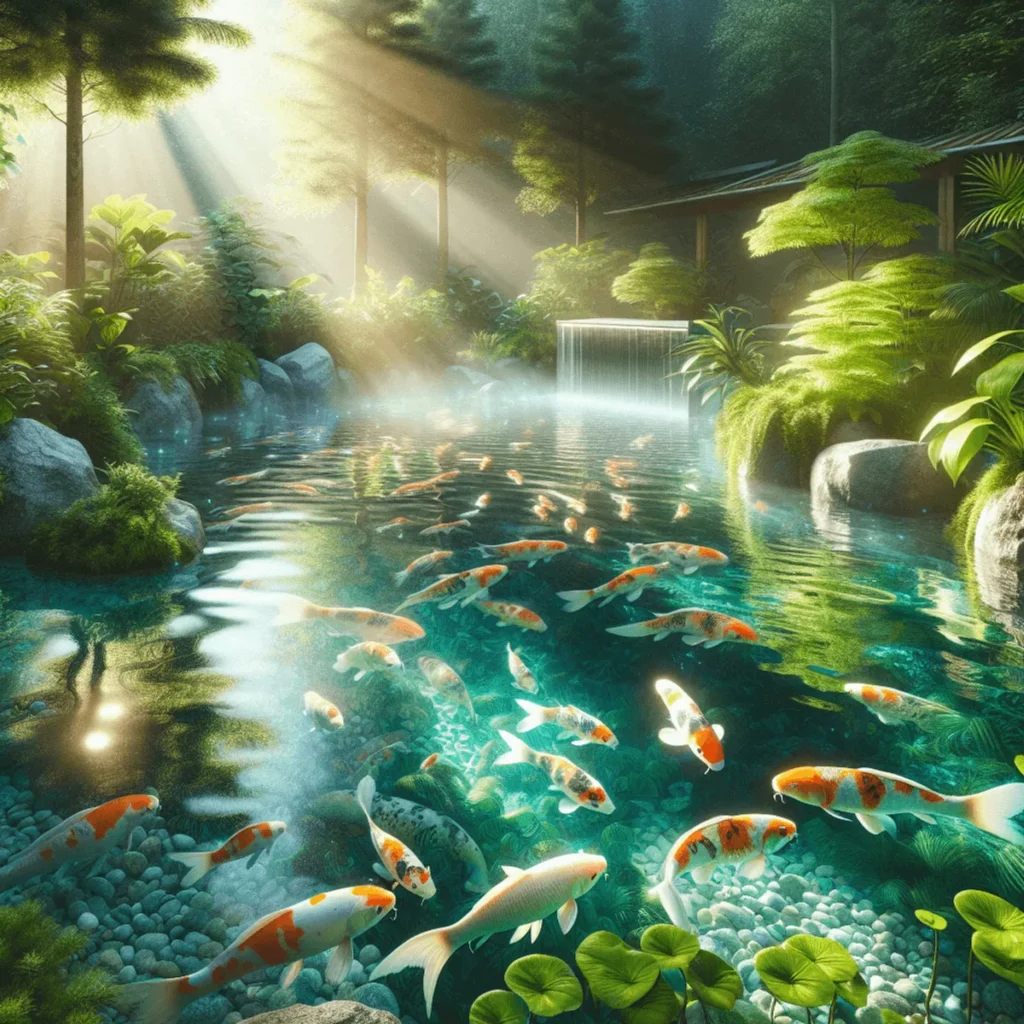
Maintaining optimal oxygen levels in water while balancing nitrates/nitrites through regular testing and appropriate filtration systems is crucial for koi health. High oxygen levels support metabolic processes and ensure the fish have enough energy to thrive. Utilizing quality aeration devices, like air pumps or fountains, can help maintain these levels. Regular testing of water parameters helps keep track of nitrate and nitrite concentrations, preventing harmful spikes.
Routine Pond Maintenance Tasks to Ensure a Healthy Environment for Your Koi Fish
Key maintenance practices are vital for the well-being of your koi:
- Removing Debris: Organic matter such as leaves, uneaten food, and fish waste can degrade water quality. Regularly skimming the pond’s surface and vacuuming the bottom will help keep it clean.
- Controlling Algae Growth: Algae compete with koi for oxygen and can rapidly alter water chemistry. Introducing algae-eating fish or using UV clarifiers can manage growth efficiently.
- Performing Partial Water Changes: Replacing 10-20% of the pond water weekly dilutes accumulated toxins and maintains stable conditions. Use dechlorinated water to avoid harming your fish.
Investing in high-quality maintenance practices ensures a healthier environment, contributing to the longevity of your koi fish. Professional pond cleaning services provide expertise in maintaining optimal conditions, offering peace of mind that your pond is well cared for.
Keeping up with these tasks promotes not just the health but also the happiness of your koi, ensuring they live long, fulfilling lives.
Investing in High-Quality Maintenance Practices for Long-Lived Kois
Keeping koi healthy long-term requires a combination of dedicated maintenance practices and attention to detail. Regular pond maintenance is essential.
- Debris Removal: Frequently remove leaves, twigs, and other debris from the pond to prevent water contamination.
- Algae Control: Use algae control measures to maintain clear water.
- Partial Water Changes: Perform partial water changes to keep nitrate and nitrite levels balanced.
- Filtration Systems: Invest in high-quality filtration systems to ensure optimal oxygen levels.
By following these practices, you can significantly enhance the lifespan of your koi fish.
FAQs (Frequently Asked Questions)
What is the average lifespan of koi fish?
Koi fish typically have an average lifespan of 25 to 30 years, although with proper care and optimal conditions, they can live for several decades.
What factors can influence the lifespan of koi fish?
Several factors can affect the lifespan of koi fish, including pond conditions (such as stable water pH levels and temperature), genetics and breeding practices, diet and feeding habits, and stress factors that may arise from spawning or environmental changes.
How does pond construction impact koi fish health?
A well-constructed pond with stable water conditions is crucial for the health and longevity of koi fish. Proper construction helps maintain optimal pH levels and temperature, which are essential for their well-being.
What role does diet play in the longevity of koi fish?
Providing a nutritious and balanced diet is vital for the longevity of koi fish. Experienced fish keepers often follow specific dietary practices to ensure their koi receive all necessary nutrients.
How does stress affect koi fish lifespan?
Stressors such as spawning can significantly shorten the lifespan of koi fish. Female koi may experience additional stress during spawning, which can impact their overall health compared to male koi.
What maintenance practices are important for promoting koi health?
Routine pond maintenance tasks such as removing debris, controlling algae growth, and performing partial water changes are essential to support the overall well-being of your koi fish. Maintaining optimal oxygen levels and balancing nitrates/nitrites through regular testing is also crucial.

